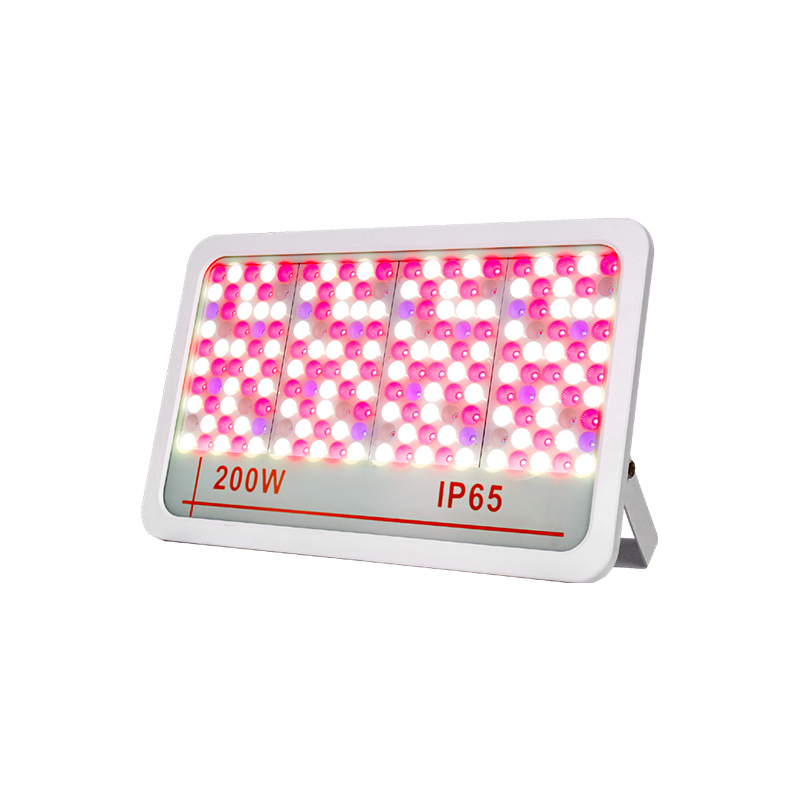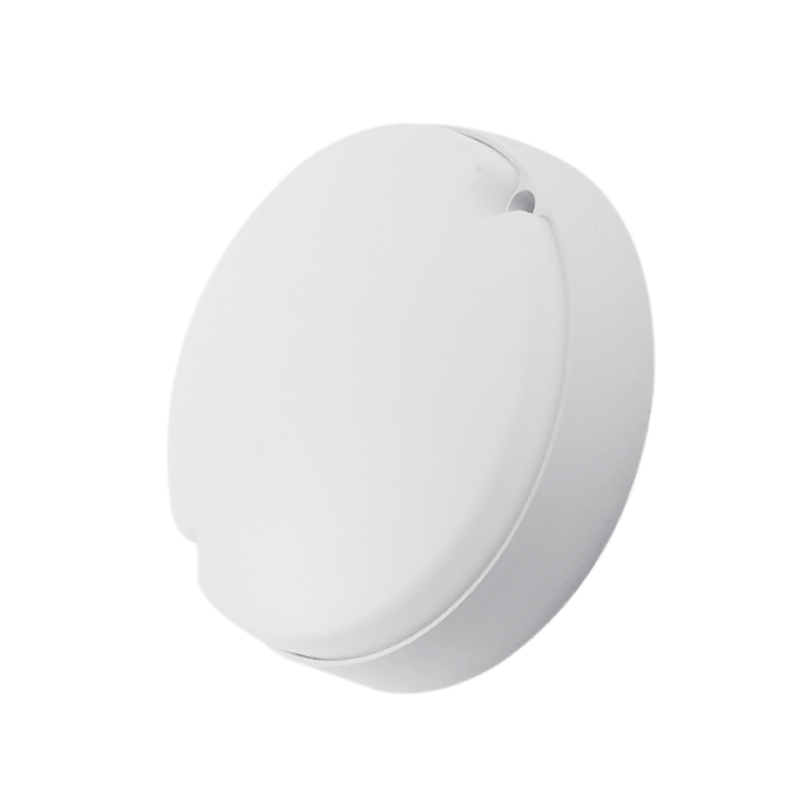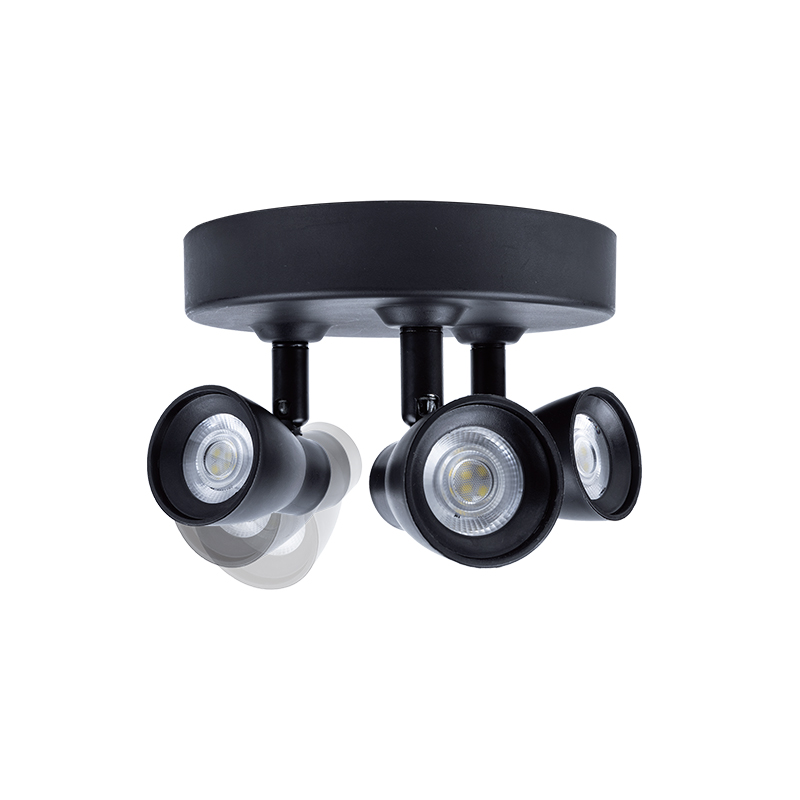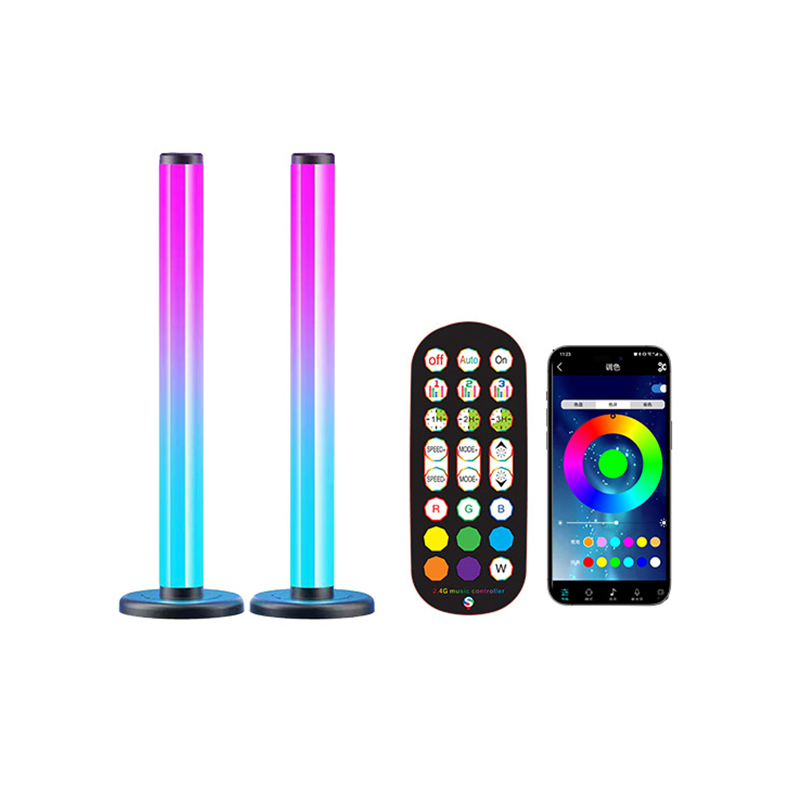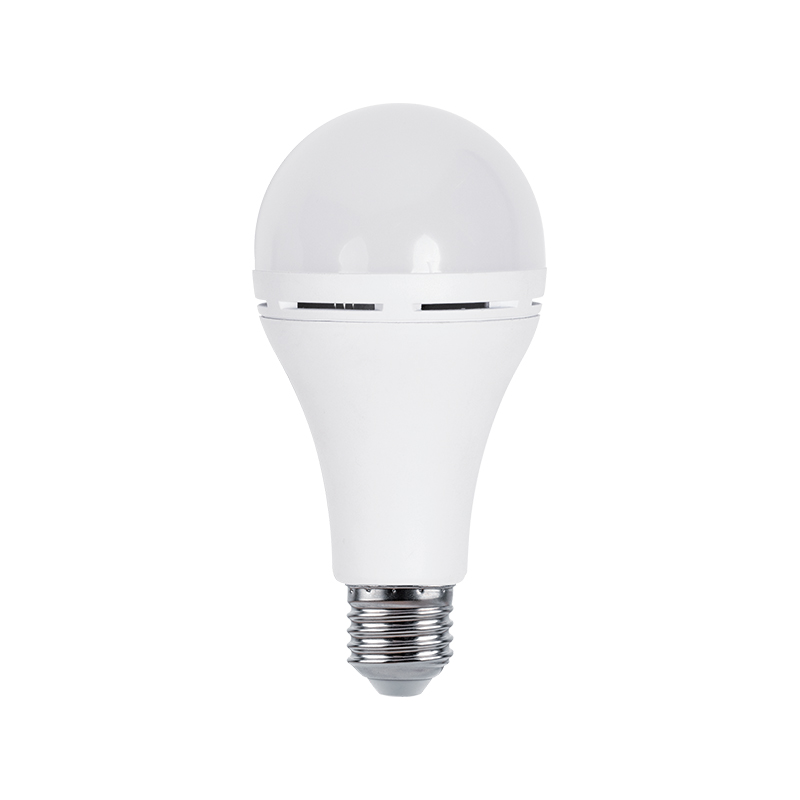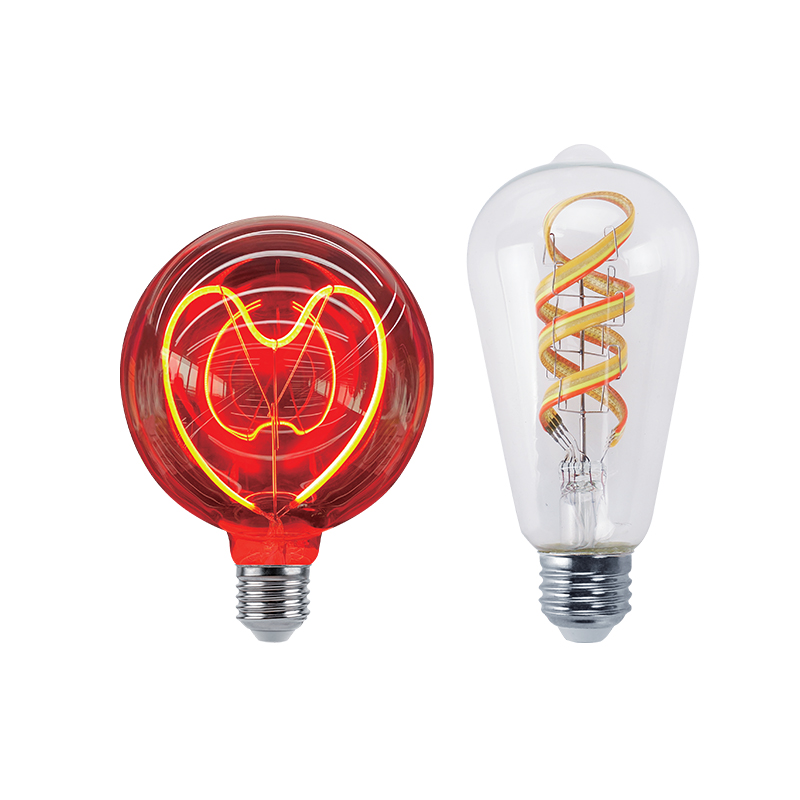We sincerely look forward to establishing a long-term development partnership with you with good quality and professional services.
In the era of rapid development of modern technology, the demand for clean spaces is increasing day by day. From medical operating rooms to precision electronics manufacturing workshops, from laboratories to biopharmaceutical factories, efficient clean space lighting has become a key factor in ensuring work quality and environmental safety. The 2835 SMD LED purification lights, with their unique technical advantages, have gradually become the ideal choice for numerous fields.
Core Performance Analysis: 2835 SMD Chip and Flicker-Free Driving Technology
1. Design Principle of Large Light-Emitting Surface
The design of the large light-emitting surface of 2835 SMD LED purification lights is the foundation for achieving efficient lighting. Traditional LED beads have a small light-emitting area, resulting in uneven light distribution, which is prone to creating dark areas and glare. In contrast, the 2835 SMD chip adopts advanced packaging technology. By increasing the chip size and optimizing the electrode structure, the light-emitting area is significantly expanded.
From an optical principle perspective, a large light-emitting surface enables more uniform diffusion of light. During the packaging process, special optical-grade silicone materials are used. These materials have high light transmittance and good flexibility, which can effectively reduce the loss of light during propagation. At the same time, the silicone material provides excellent protection for the chip, preventing the influence of external environmental factors on the chip’s performance. In practical applications, the design of the large light-emitting surface enables the 2835 SMD LED purification lights to provide more uniform and soft lighting effects in clean spaces, avoiding situations of local over-brightness or over-darkness, and creating a comfortable visual environment for workers. For example, in a laboratory, uniform lighting can ensure that experimenters can clearly observe experimental samples and instrument displays, reducing visual fatigue and improving the accuracy of experiments.
2. Path to Achieving High Brightness and Power
Achieving high brightness and power is an important guarantee for 2835 SMD LED purification lights to meet the lighting requirements of clean spaces. At the chip level, the 2835 SMD chip uses high-efficiency semiconductor materials and advanced manufacturing processes, which can more effectively convert electrical energy into light energy. The internal PN junction structure of the chip has been optimized, reducing the energy loss during the recombination process of electrons and holes, thereby improving the luminous efficiency.
In terms of the driving circuit, constant current driving technology is adopted. Constant current driving can ensure that the LED chip obtains a stable current under different operating voltages, avoiding brightness instability and shortening of the chip’s lifespan caused by current fluctuations. By precisely controlling the current magnitude, the luminous potential of the chip can be fully exploited to achieve high-brightness output. In addition, high-efficiency power management chips are also used to optimize the input power, improving the power conversion efficiency and reducing energy loss.
In terms of heat dissipation design, 2835 SMD LED purification lights have also been carefully considered. Good heat dissipation is the key to ensuring the stable operation of the LED chip and achieving high brightness and power. The lamp uses a large-area heat dissipation substrate, usually made of metal materials with high thermal conductivity, which can quickly conduct the heat generated by the chip. At the same time, the heat dissipation substrate is connected to the lamp housing through a special heat dissipation structure, such as heat dissipation fins, which increases the heat dissipation area and accelerates the heat dissipation speed. Through these measures, the 2835 SMD LED purification lights can maintain the chip’s operating temperature within a reasonable range while ensuring high-brightness and high-power output, extending the service life of the lamp.
3. The Special Value of Flicker-Free IC in the Purification Environment
In clean spaces, the stability of lighting is of crucial importance, and the flicker-free IC plays a special role in 2835 SMD LED purification lights. Traditional LED lights are prone to stroboscopic phenomena if they do not have a well-designed driving circuit. Stroboscopic not only causes harm to human eyes, leading to discomfort symptoms such as visual fatigue and headaches but also interferes with the normal operation of some precision instruments and equipment.
The flicker-free IC precisely controls the driving current of the LED through advanced circuit design and algorithms, ensuring a stable current output and thus achieving flicker-free lighting. In a medical operating room, doctors need to concentrate on surgical operations for a long time. A flicker-free lighting environment can effectively reduce doctors’ visual fatigue and improve the accuracy and safety of surgeries. In an electronics manufacturing workshop, stroboscopic may cause workers to have visual illusions about moving components, affecting product quality and production efficiency. However, the flicker-free 2835 SMD LED purification lights can provide workers with a stable and clear visual environment, ensuring the smooth progress of production. In addition, in some purification environments sensitive to electromagnetic interference, the flicker-free IC can also reduce electromagnetic radiation, avoiding interference with other electronic devices and maintaining the stability and reliability of the entire purification environment.
Light Quality Control Solutions: CCT Adjustable and Ra80+ Color Rendering System
1. Engineering Applications of the Color Temperature Adjustment Button
The CCT (Correlated Color Temperature) adjustable function of 2835 SMD LED purification lights is realized through the color temperature adjustment button, which has important significance in engineering applications. Different clean space scenarios have different requirements for color temperature. In a medical operating room, cold white light with a relatively high color temperature, such as 5000K - 6500K, is usually required. Such light can provide clear and bright lighting effects, helping doctors to more accurately distinguish the color and details of tissues and improving the visibility of surgeries. In a laboratory, according to the specific experimental requirements, it may be necessary to switch between different color temperatures. For example, when conducting chemical experiments, light with a higher color temperature can better observe the color changes during the chemical reaction process; when conducting biological experiments, warm white light with a lower color temperature, such as 3000K - 4000K, may be more suitable for observing the morphology and structure of biological samples, reducing the impact of light on the samples.
The design of the color temperature adjustment button enables operators to conveniently and quickly adjust the color temperature of the lamp. In actual engineering applications, by reasonably setting the position and operation mode of the color temperature adjustment button, such as using a knob-type or button-type design and being equipped with clear color temperature markings, workers can quickly adjust the lighting color temperature according to different working scenarios and requirements. In addition, some advanced 2835 SMD LED purification lights also support remote color temperature adjustment through an intelligent control system, further improving the flexibility and convenience of use.
2. Color Rendering Requirements in Medical/Laboratory Scenarios
In medical and laboratory scenarios, there are strict requirements for the color rendering performance of LED purification lights. The Ra80+ color rendering system ensures that 2835 SMD LED purification lights can accurately restore the true colors of objects, meeting the needs of these special scenarios.
In the medical field, accurate color rendering is crucial for disease diagnosis and treatment. Doctors need to observe the color of patients’ skin, tissues, etc. to judge the condition. For example, in dermatology, accurate color rendering can help doctors more clearly observe the color, morphology, and scope of skin lesions, thereby making accurate diagnoses. In the operating room, high-color-rendering lighting allows doctors to more clearly distinguish the color differences between different tissues and blood vessels, avoiding misoperations during the surgical process and ensuring the safety of patients.
In laboratories, especially in chemical and biological laboratories, the color changes of experimental samples are important bases for judging experimental results. 2835 SMD LED purification lights with high color rendering can ensure that the colors observed by experimenters are consistent with the actual situation, improving the accuracy and reliability of experimental data. For example, in a chemical titration experiment, accurate color rendering can help experimenters more precisely determine the titration end point; in a biological cell culture experiment, it can clearly observe the growth status and color changes of cells, providing strong support for scientific research work.
3. Environmental Adaptability of Multiple Lighting Effects
The multiple lighting effects of 2835 SMD LED purification lights enable them to adapt to different clean space environments. In addition to color temperature adjustment and high color rendering, dimming functions can also be used to achieve different brightness outputs. In some scenarios where full-brightness lighting is not required, such as nighttime nursing in a medical ward, by reducing the light brightness, it can not only meet the basic lighting needs of nursing staff but also not affect the rest of patients. In the darkroom environment of a laboratory, the light intensity can also be controlled through the dimming function to meet the special lighting requirements of different experimental links.
In addition, some 2835 SMD LED purification lights also have special lighting effects, such as emergency lighting functions. In case of sudden power outages and other situations, the lamp can automatically switch to the emergency lighting mode, providing lighting for a certain period of time to ensure the safe evacuation of personnel and the normal operation of important equipment. In some clean spaces with special requirements for the direction of light, such as vertical laminar flow clean benches, the lamp can also achieve directional lighting through special optical design, meeting the lighting requirements on the workbench while reducing the impact on the surrounding environment. Through these multiple lighting effects, 2835 SMD LED purification lights can better adapt to various complex clean space environments, improving the practicality and flexibility of the lighting system.
Industrial-Grade Structural Design: ALU+PC Composite Material System
1. Analysis of the Chemical Resistance of the Main Materials
The 2835 SMD LED purification lights adopt the ALU (aluminum alloy) + PC (polycarbonate) composite material system, and the chemical resistance of its main materials is the key to adapting to the special environment of clean spaces. Aluminum alloy has good mechanical strength and corrosion resistance, and can resist the erosion of general chemical reagents and moisture. In clean spaces, various disinfectants and cleaning agents may be used, and the aluminum alloy material can effectively resist the corrosion of these chemical substances, maintaining the appearance and performance stability of the lamp. At the same time, aluminum alloy has a relatively low density and is lightweight, which is convenient for the installation and transportation of the lamp.
PC material has excellent optical performance and impact resistance. Its high light transmittance can ensure the effective propagation of light, and it has good resistance to ultraviolet rays and is not easy to age and turn yellow. In clean spaces, PC material can withstand certain temperature changes and chemical environments, and will not deform or crack due to environmental factors. In addition, PC material also has good flame retardant performance, meeting fire safety requirements, and can reduce the risk of fire spreading in case of emergencies such as fires. The ALU+PC composite material system gives full play to the advantages of the two materials, enabling the 2835 SMD LED purification lights to operate stably in clean spaces for a long time and meet industrial-grade usage requirements.
2. Advantages of Modular Connector Design
The modular connector design is a major highlight of the industrial-grade structural design of 2835 SMD LED purification lights. This design makes the installation, maintenance, and upgrading of the lamp more convenient. During the installation process, the modular connector can achieve quick plugging and unplugging without complex wiring operations, greatly improving the installation efficiency. Different modules are connected through standardized interfaces, ensuring the stability and reliability of the connection.
In terms of maintenance, when a certain part of the lamp fails, only the corresponding module needs to be replaced without disassembling and repairing the entire lamp, reducing maintenance costs and time. For example, if the LED chip module fails, simply pull out the faulty module and replace it with a new one to restore the normal operation of the lamp. In terms of upgrading, with the continuous development of technology, the performance of the lamp can be improved by replacing more advanced modules, such as replacing the LED chip module with higher brightness or a more intelligent drive module, so that the lamp can always maintain good working conditions and adapt to changing needs. The modular connector design also facilitates the combined use of lamps. According to different space sizes and lighting requirements, multiple lamp modules can be flexibly spliced to achieve customized lighting solutions.
3. The Impact of End Cap Sealing on the Purification Level
In clean spaces, the purification level is an important indicator to measure the cleanliness of the environment, and the sealing of the end caps of 2835 SMD LED purification lights has a direct impact on the purification level. Good end cap sealing can effectively prevent external pollutants such as dust and microorganisms from entering the interior of the lamp, avoiding the interior of the lamp from becoming a pollution source. At the same time, it can also prevent the components inside the lamp from being damaged by the external environment.
The end caps usually use special sealing materials, such as silicone sealing rings, which have good elasticity and sealing performance and can maintain the sealing effect under different temperature and pressure conditions. During the installation process, through precise processing technology and installation methods, it is ensured that the end caps fit tightly with the lamp body without leaving gaps. In some places with extremely high requirements for the purification level, such as biosafety laboratories and sterile pharmaceutical workshops, strict end cap sealing can ensure that the lamp does not pollute the environment and maintain the cleanliness of the space. At the same time, good sealing can also prevent moisture from entering the interior of the lamp, avoiding damage to electrical components due to moisture and improving the safety and reliability of the lamp. By optimizing the end cap sealing design, 2835 SMD LED purification lights can meet the purification level requirements of different clean spaces, providing a guarantee for efficient clean space lighting.
System Integration Solutions: Multiple Connection Methods and Power Supply Configuration
1. Wiring Flexibility of Male-Female Connectors
The 2835 SMD LED purification lamps use male-female connectors, which bring great flexibility to wiring. The design of male-female connectors makes the connection between lamps more convenient, and various wiring methods can be adopted according to different space layouts and lighting requirements. In large clean workshops or laboratories, a large number of LED purification lights usually need to be installed. Through male-female connectors, the lamps can be connected in series or in parallel to form different lighting circuits.
The series connection method can simplify the wiring, reduce the number of cables used, and lower the installation cost. In this connection method, the current passes through each lamp in turn, achieving unified control. The parallel connection method is more flexible. Each lamp has an independent power supply, and even if one lamp fails, it will not affect the normal operation of other lamps, improving the reliability of the system. At the same time, the plug-and-play design of male-female connectors is convenient for adding, reducing, and adjusting the position of the lamps. During later renovations or re-layouts, there is no need to lay a large number of cables again. Only the connection position of the connectors needs to be adjusted, which greatly saves time and cost. In addition, male-female connectors also have good electrical performance, which can ensure the stable transmission of current and reduce signal interference, ensuring the normal operation of the lighting system.
2. Power Supply Recommendations for Different Scenarios
Different clean space scenarios have different requirements for the power supply of 2835 SMD LED purification lights. In places with extremely high requirements for power supply stability, such as medical operating rooms, it is recommended to use dual-power supply and be equipped with an Uninterruptible Power Supply (UPS). The dual-power supply can automatically switch to the other power supply when one power supply fails, ensuring the continuous lighting of the lamp and avoiding affecting the normal progress of the surgery due to a power outage. The UPS can provide emergency power at the moment of a power outage, ensuring that the lighting system continues to work for a short period of time, providing enough time for surgical staff to complete the surgical operation or carry out emergency treatment.
In large industrial places such as electronics manufacturing workshops, due to the large number of lamps and high power, a centralized power supply method is recommended. By setting up a special power distribution box, the lamps in the entire workshop can be powered and managed uniformly. In the design of the power supply line, the load capacity and voltage drop of the line should be fully considered, and the cable specifications should be reasonably selected to ensure that each lamp can obtain a stable voltage and current. At the same time, in order to improve energy utilization efficiency, an intelligent dimming control system can be adopted to automatically adjust the brightness of the lamps according to different working periods and production requirements, reducing energy consumption.
In small laboratories or clean rooms and other places, a local power supply method can be adopted, and the lamps can be powered by a small power adapter. This power supply method is simple, flexible, and easy to install, and is suitable for places with high requirements for space layout. When selecting a power adapter, it is necessary to ensure that its output power and voltage match the requirements of the lamp to ensure the normal operation of the lamp.
3. Compatibility with Intelligent Control Systems
2835 SMD LED purification lamp has good compatibility with intelligent control systems and can realize intelligent lighting management. By integrating intelligent control modules, such as wireless communication technologies such as ZigBee, Wi-Fi or Bluetooth, the lamp can be connected to the intelligent control system to realize remote control and automatic management.
In the intelligent control system, different lighting scene modes can be set, such as surgical mode, rest mode, experimental mode, etc. According to different work needs, the lighting mode can be switched with one key through the mobile phone APP or control panel to realize automatic adjustment of parameters such as light brightness and color temperature. For example, in a medical operating room, the lighting mode can be switched to surgical mode before the operation begins. At this time, the lamp automatically adjusts to high brightness and high color temperature cold white light to provide clear lighting; after the operation, it switches to rest mode, and the light automatically dims to warm white light to create a comfortable environment.
The intelligent control system can also realize automatic adjustment of lighting through sensors. For example, through the human infrared sensor, when someone enters the clean space, the lamp is automatically turned on; when the person leaves, the lamp is automatically turned off after a certain period of time to achieve energy saving. Through the light sensor, the brightness of the lamp is automatically adjusted according to the intensity of the ambient light to maintain the stability of the light in the space. In addition, the intelligent control system can also monitor the working status of the lamp in real time, detect faults in time and alarm, facilitate maintenance personnel to carry out maintenance, and improve the reliability and management efficiency of the lighting system.

 English
English Español
Español Deutsch
Deutsch
